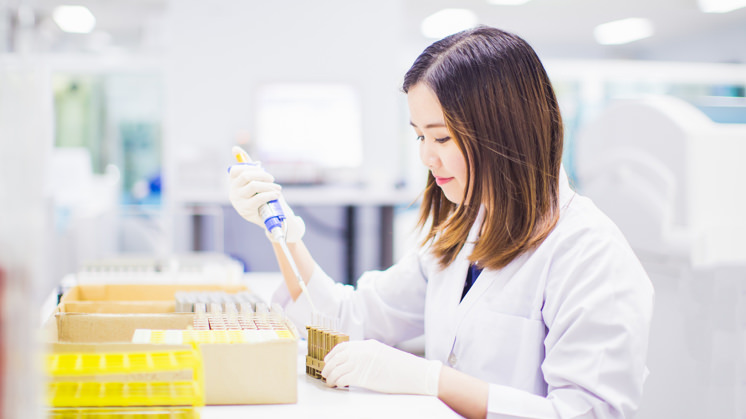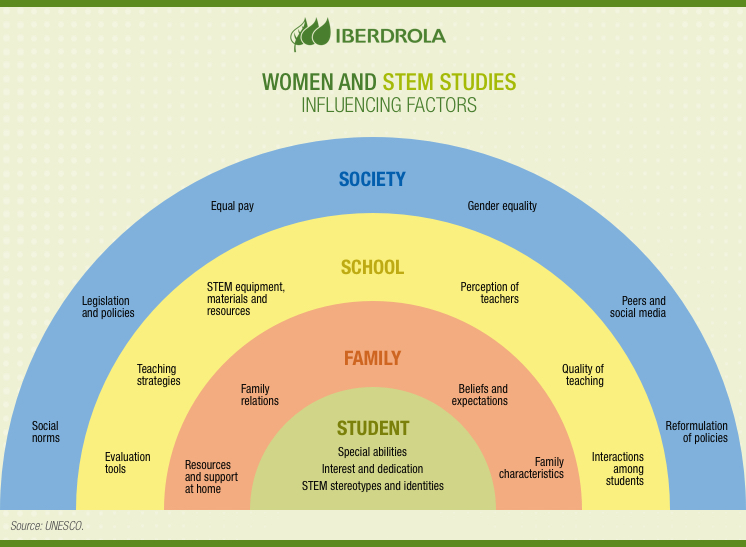Women in science
Women and STEM disciplines
Social norms, prejudices and expectations limit women's interests and determine their life choices from the earliest stages. Only 35% of women choose science-related degrees. Is there a solution? For many experts, the answer lies in promoting STEM education.



No one knows for sure why women prefer humanities to sciences, increasingly known as STEM disciplines —Science, Technology, Engineering y Mathemathics, — science, technology, engineering and mathematics —. Some experts say that tradition and social pressure are the main causes. For example, World Bank general counsel Sandie Okoro says that "one of the most serious problems is that many girls end up being what they were told to be when they were little". In fact, a study conducted on girls aged 14 to 16 by the Institute of Physics found that physics did not appeal to them. One of the reasons for this was that “it has nothing to do with what they want to do in life”.
In any case, the data corroborate women's disaffection with science. According to a UNESCO report, published in 2019, Cracking the Code: Girls' and Womens' Education in STEM, only 35% of students enrolled in STEM-related fields are female, a percentage that drops to 3% in information and communication technology (ICT) degrees, 5% in mathematics and statistics degrees and 8% in engineering. UNESCO says that the figures are alarming because everything points to STEM education being the key to accessing a significant share of the jobs of the future-and many existing ones.
Women and STEM education
Is there a solution? It seems coherent to point to education as the best way to tackle the problem. In this sense, urgent changes are required for education to reach its maximum potential. Above all, there is an urgent need to implement measures to promote access to education.
Many of today's business leaders believe that we need to get girls interested in STEM disciplines at the earliest stages. "You don't find your calling in the final years of school. Girls need to be taught that technology is cool from 12 years of age", says Ann Cairns, executive vice chairman at Mastercard. Marta Martínez, president of IBM Spain, Portugal, Greece and Israel, has a similar opinion: "We need to make technology popular among girls at a young age, teaching it in a practical and fun way to awaken their curiosity".

SEE INFOGRAPHIC: Women and STEM studies, influencing factors [PDF]
Women in science, an inspirational example
According to UNESCO, just 19 women (3%) have won Nobel prizes in the sciences (Medicine, Physics, Chemistry), and just 29,3% of researchers worldwide are women. But there have always been female scientists. Here are some of the most inspiring examples:
-
Hypatia of Alexandria
The first known female astronomer. She improved the design of primitive astrolabes — instruments to determine the positions of the stars — and made countless contributions to astronomy.
-
Marie Curie
A physics and mathematics graduate, she was a pioneer in the field of radiation. She discovered radium and plutonium and became the first woman to win a Nobel Prize — and she did it twice, first for Physics and then for Chemistry. —
-
Valentina Tereshkova
On board the Vostok 6 and at just 26, Tereshkova, whose call sign was Seagull, made history by becoming the first female astronaut in 1963. During the 70 hours and 50 minutes she was away from Earth she circled the planet 48 times.
-
Katherine Johnson, Dorothy Vaughan and Mary Jackson
With the calculations of these three African-American women working at NASA, Neil Armstrong reached the moon. His feat became popular with the film Hidden Figures.
-
Lise Meitner
Austrian-Swedish physicist and the discoverer of nuclear fission. Her research partner Otto Hahn received the Nobel Prize in 1944 after she was forced to flee Germany for being Jewish.
-
Elizabeth Blackburn
Australian biochemist who received the Nobel Prize in Medicine in 2009 for discovering telomerase, an enzyme capable of lengthening telomeres (the ends of chromosomes) and giving new life to cells.
And many other women inventors like them who forever changed humanity: the first programming language, the syringe, desalination units, wifi, kevlar, anti-reflective glass, the fire escape, and even the lifeboat.




